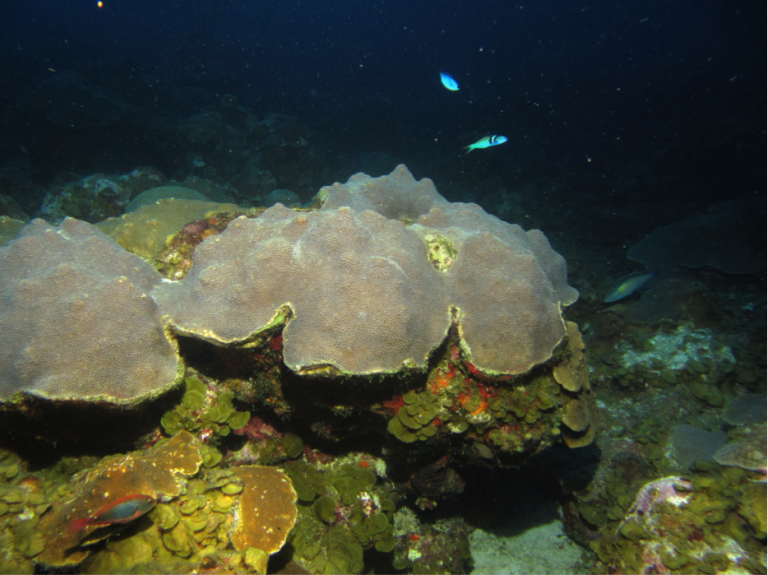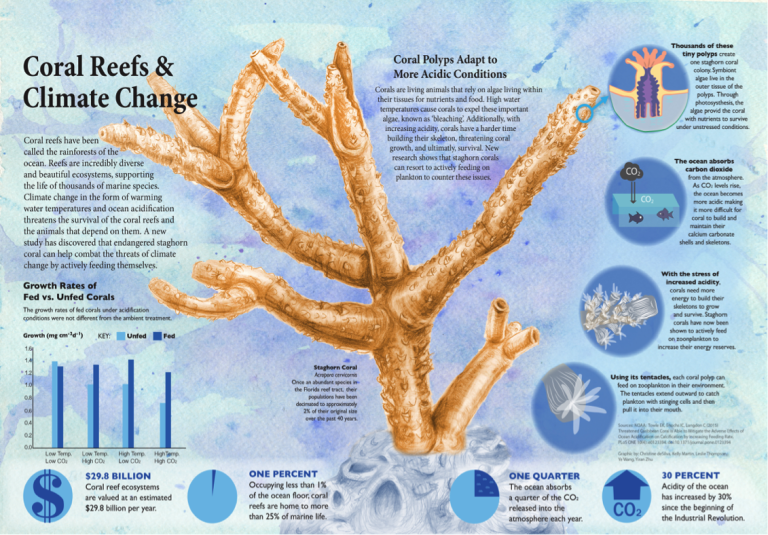Rosenstiel School researchers are studying coral to understand climate change's impacts on these critical marine colonies, their future in the changing environment, and how they can adapt and survive.
Over the past several years, studies on the future of corals and coral reefs have been heating up—much like the warming ocean waters that are stressing these important living colonies.
Scientists and students from the Rosenstiel School of Marine and Atmospheric Science at the University of Miami are examining corals in the laboratory, along Florida’s coasts and throughout the world.
Their findings are significant in defining the role of corals in marine ecology, in plotting the future of corals in a changing environment, and identifying corals that may better adapt to the growing stresses of warming waters and acidification.
For More on Corals:
FAQ on Climate Change and
Corals
The Corals and
Climate Change Laboratory
Recently, Rosenstiel researchers studying corals in Florida and the Caribbean looked at which types seem to be more resilient to the impacts of climate change, including battling acidification.
About the Video
Researchers and students at the Rosenstiel School are studying the impact of warmer and more acidic waters on the life cycles of different types of corals.
Join the Conversation
Rosenstiel School, @UMiamiRSMAS
University of Miami, @univmiami
UM News, @univmiaminews
Video on coral reefs, climate change, and acidification.
“Knowing which coral species will be ‘winners’ on reefs of the future will help people be aware of what reefs might look like in the coming decades,” said UM Rosenstiel School alumna Erica Towle.
For the experiment, Towle and her team from the UM Corals and Climate Change Lab collected three common species of corals from the Florida Reef Tract, which extends from the Florida Keys to Stuart in Martin County, during two seasonal points (winter and summer).
The species mustard hill coral, great star coral, and mountainous star coral were analyzed for growth rate, lipid content, algal symbiont density, and chlorophyll content. The surface area of the corals were also measured using a 3-D scanner supplied by UM alumnus Derek Manzello at the NOAA Atlantic Oceanographic and Meteorological Laboratory.
“It’s important for us to start to understand which corals will be dominant on reefs of the future so we can get a better sense of species on which to focus stronger conservation efforts,” said Towle.In a recent blog post, Rosenstiel graduate student Jacob Jerome outlined the threats against corals.
“Higher temperatures stress corals and cause them to lose their symbiotic algae, or zooxanthellae. These symbiotic algae are what give corals their color and without them the corals turn white, an event known as coral bleaching,” he says.
“Ocean acidification occurs due to the overwhelming amount of carbon dioxide that is absorbed into the ocean from the earth’s atmosphere. When carbon dioxide is absorbed into the water, the pH of the water decreases and the water becomes more acidic,” he added.
Chris Langdon, Rosenstiel professor and chair of the Department of Marine Biology and Ecology, and director of the Corals and Climate Change Lab, has noted the Caribbean gorgonian corals appear to fight off acidification impacts.
"Our results suggest that gorgonian coral may be more resilient than other reef-dwelling species to the ocean acidification changes that are expected to occur in the oceans as a result of climate change," says Langdon.
Researchers in June 2015 published a study that showed why threatened Caribbean star corals sometimes swap partners to help them recover from bleaching events.
The researchers discovered that severe bleaching and warmer water recovery temperatures caused corals to shuffle their symbiontic algae in favor of more heat-tolerant algae.
Climate change is one of the main threats to the Caribbean star coral, which was recently listed as a ‘threatened’ species under the U.S. Endangered Species Act.
“These findings help resolve a long-standing debate over why some corals switch partners after bleaching, while others do not,” said Andrew Baker, Rosenstiel associate professor of marine biology and ecology and a Pew fellow in marine conservation.
“They show that, as the oceans continue to warm and bleaching events become more severe, we might expect heat-tolerant symbionts to become a common feature of recovering reefs. Corals that can ‘buddy up’ with different algae might be more resistant to bleaching in the future,” he said.
Two more recent studies, also conducted in Baker’s Coral Reef Futures Lab at UM, showed how corals modify their symbionts in response to environmental changes.
The first, published in the journal Global Change Biology, showed how changes in symbiont partners following bleaching directly increased corals’ thermal tolerance. The second, published in the journal Ecology, showed that, in addition to changing the types of algae they partner with, corals also fine-tune the number of algae they contain to deal with an ever-changing environment.
In February 2013, Rosenstiel researchers published a study in Nature Climate Change using emissions scenarios and climate models to show how varying levels of carbon emissions are likely to result in more frequent and severe coral bleaching events.
Bleaching events caused a reported 16 percent loss of the world's coral reefs in 1998, according to the Global Coral Reef Monitoring Network.
If carbon emissions stay on the current path most of the world's coral reefs (74 percent) are projected to experience coral bleaching conditions annually by 2045, results of the study show.
- Rosenstiel School and UM News

